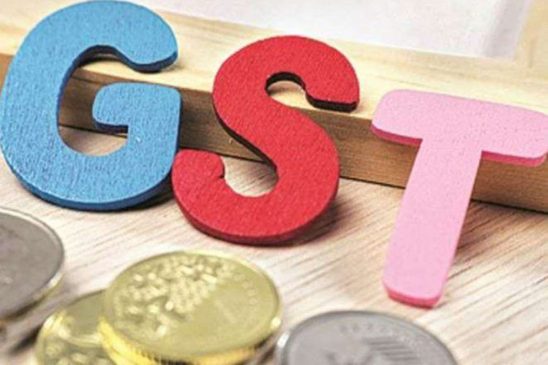GST was brought to remove cascading of taxes, improve competitiveness, facilitating manufacturers, and to bring about uniformity of tax rates and structures
After a roller-coaster ride, the current indirect tax system, goods and services tax (GST), has completed its five years of implementation on Friday (July 1). The regime, with a driving motto of ‘One Nation, One Market, One Tax’, subsumed in itself a majority of taxes and cesses of central and states on the sale of goods and services. The objective of the GST system was to simplify the indirect tax regime in the country.
Why GST Was Introduced?
The GST regime was brought in and implemented from July 1, 2017, in order to declutter the country’s new indirect tax, which included multiple state and central taxes apart from cess on the production and sale of goods, and also on services. Its objective was to simplify business processes, tax administration and compliances in India.
Read More: Swiggy Announces ESOPs Worth $23 Million to Incentivise 900 Employees; Know More
It was also brought to remove the cascading of taxes, improve competitiveness, facilitating manufacturers and exporters, to bring about uniformity of tax rates and structures, and single and transparent tax.
How Many Taxes Have Been Subsumed Into GST?
A total of over 17 taxes and 13 cesses of central and states on sale of goods and services have been subsumed into the GST regime. The subsumed central levies are service tax, countervailing duty, special additional duty of customs, additional excise duty and central excise duty. The state levies that have been included are purchase tax, octroi and entry tax, state VAT/ sales tax, entertainment tax and central sales tax.
Currently, the GST system has four slabs — 5 per cent, 12 per cent, 18 per cent, and 28 per cent. There are roughly about 500 items under the 18 per cent slab, from which about 70 per cent of the GST collections come. Apart from this, there is an exempt list of items like unbranded and unpacked food items that do not attract the levy.
How GST Is Different From Earlier Indirect Tax Regime?
Cascading of Taxes: In the earlier regime, there was no input tax credit (ITC) of central taxes against state taxes and vice versa, and there was tax on tax. In the GST, there is an ITC system on supply of goods and services through the supply chain, and there is no tax on tax.
VAT Principles: Earlier, the Centre was empowered to levy taxes on goods at manufacturing stage and services and states were empowered to levy taxes on goods at distribution stage. Now, under the GST system, the Centre and states are empowered to levy taxes concurrently on a common base on all stages of supply chain.
Read More: New GST rates to be introduced from 18 July: What gets costlier and what’s cheaper?
Regional Imbalances: The earlier indirect tax system was based on the place of origin of products and services, which means manufacturing states used to get revenue. The current GST regime is a destination-based tax, which means consuming states get revenue.
Inter-State Trade: Earlier, there was a tax arbitrage between intra-state and inter-state sale of goods. Under the current GST system, the same rate of tax is applicable across the country, and national e-way bill eliminates border check posts to ensure free movement.
In the five years of the implementation of GST, there have been multiple challenges including multiple tax administrations, complex compliances that also hindered trade facilitations, and the requirement of capacity building, among others.
What Experts Say On The 5 Years Of GST?
Abhishek Jain, partner (indirect tax) at KPMG in India, said, “The introduction of GST has facilitated the ease of doing business as most businesses now have to undertake compliance in respect of only a single tax levy, namely GST. Ease has also been facilitated by digitisation.”
He added that going forward, the government can consider setting up of a central authority to resolve conflicting AAR judgments across states. Also, since five years have passed, the government can consider doing away with anti-profiteering provisions freeing businesses to set prices. “Further, bringing petroleum and electricity under GST ambit will help prevent cascading and ensure further uniformity. Lastly, some checks can also be incorporated on system-generated GST notices, so as to avoid any unnecessary harassment of taxpayers.”
Meghna Suryakumar, founder & CEO of data insights-as-a-service firm Crediwatch, said, “Today, fintech and data science companies are able to provide several products that are built atop the GSTN framework to enable unlocking value. The platform and infrastructure built by the Goods and Services Tax Network (GSTN) are enabling the ushering in of greater trust and transparency between businesses in India. Companies like ours have started building products that enable deeper financial analysis, such as analysis of suppliers and customers. This is paving the way for embedded finance in supply chains and complex delivery networks. This could be a crucial foundational layer for India’s aspirations to become an advanced economy.”
On the key challenges to be addressed, Deloitte in its report said the process of matching and reconciling ITC claims with auto-generated input tax credit data has increased the onus on recipients and enhanced the risk of ITC disallowance in their hands due to default of their suppliers.
It also added that multiple state-level audits of taxpayers and cross-empowerment have led to increased operational complexities and litigation for taxpayers. “Divergent rulings and absence of standardisation in rulings have also posed a major hurdle in making tax decisions for industries under the GST regime.”





































